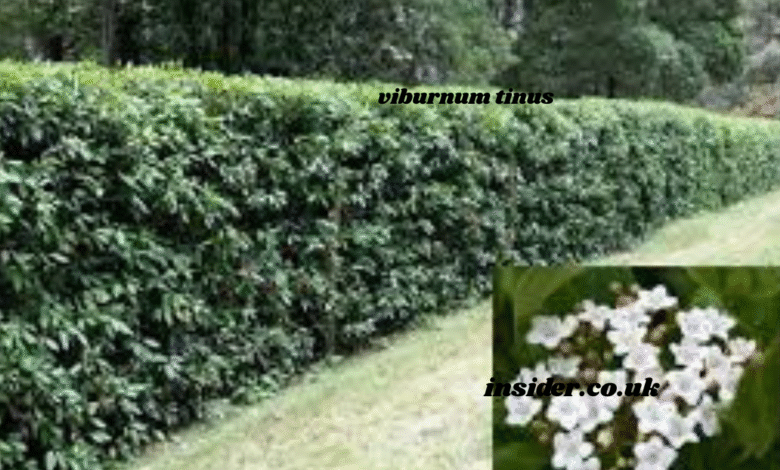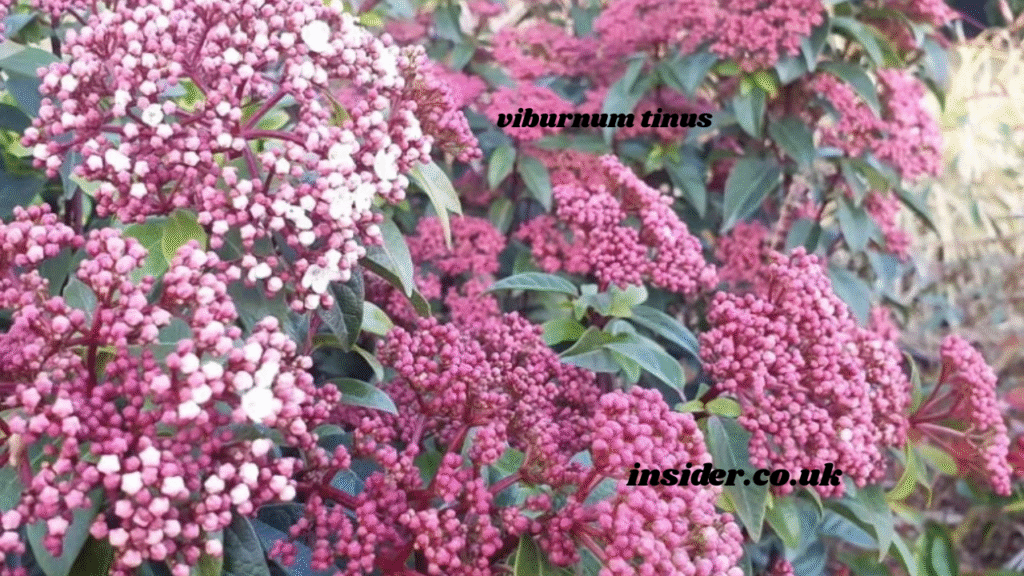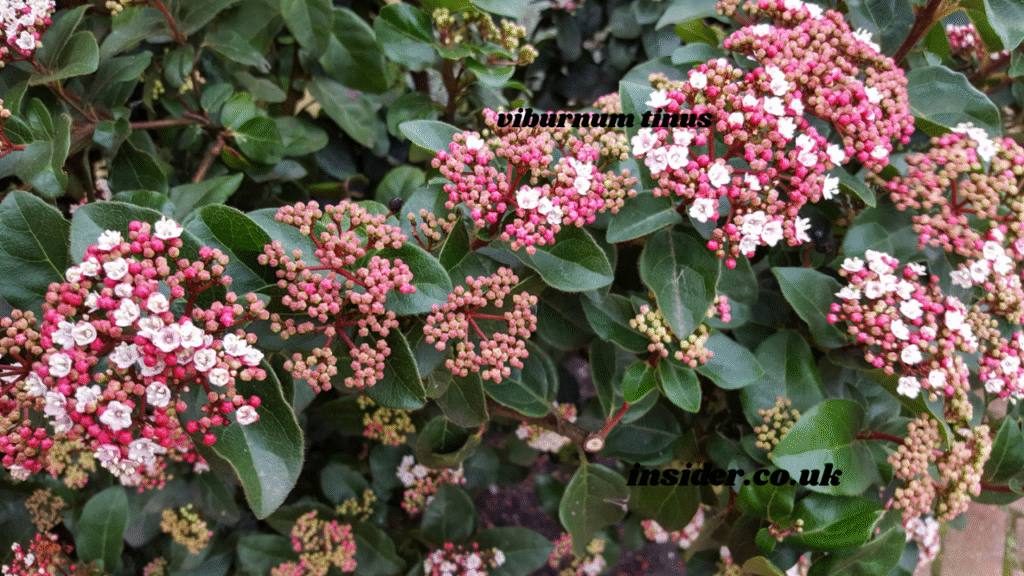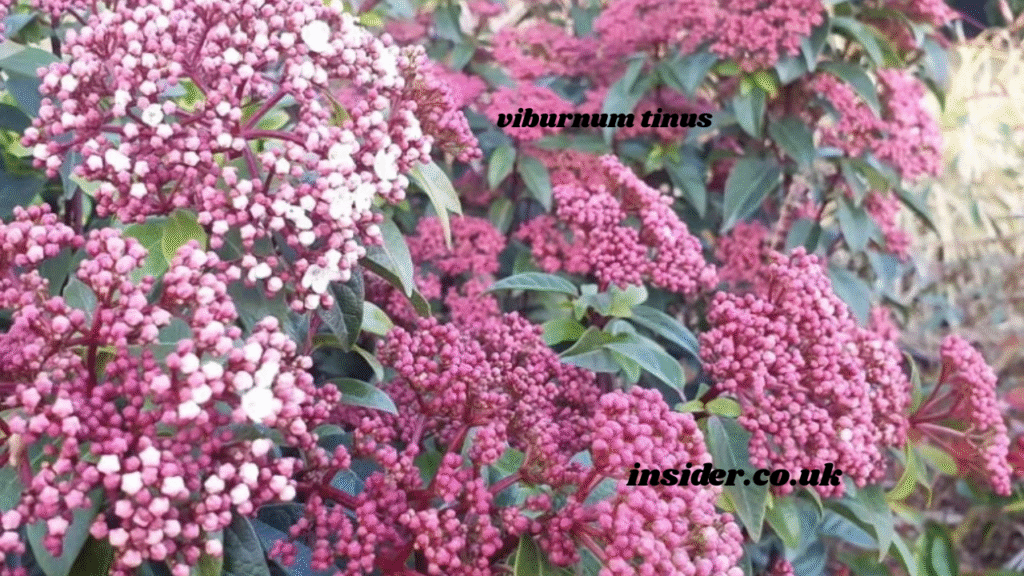
Viburnum tinus ?? – A Complete Guide to Growing and Caring for Viburnum tinus
Introduction to Viburnum tinus ??
Viburnum tinus ?? is an evergreen shrub cherished by gardeners for its year-round beauty, clusters of delicate pinkish-white flowers, and metallic blue berries. Known for its adaptability and resilience, Viburnum tinus ?? can thrive in a range of garden conditions, making it an excellent choice for hedging, screening, or as a standalone feature in small and large gardens alike. This guide explores everything you need to know about Viburnum tinus ??, including its botanical features, planting requirements, care tips, pruning, and common problems, helping you create a thriving and attractive garden space.
Botanical Features of Viburnum tinus ??

Viburnum tinus ?? belongs to the Adoxaceae family and is native to the Mediterranean region, thriving in temperate climates. It typically reaches a height of 2–3 meters, with dense, glossy, dark green foliage providing year-round structure to the garden. In late autumn through spring, Viburnum tinus ?? produces clusters of small, star-shaped pinkish-white flowers, adding softness and color during the colder months when other plants are dormant.
Following the flowering period, metallic blue-black berries develop, attracting birds and adding another layer of interest to your garden design. The shrub’s leathery leaves, with their slightly wavy edges, contribute to its resilience against wind and cold weather, making Viburnum tinus ?? a reliable structural plant in exposed areas.
Best Planting Conditions for Viburnum tinus ??

To ensure your Viburnum tinus ?? thrives, it is essential to plant it in the right conditions. This evergreen shrub prefers:
- Soil: Well-drained, moderately fertile soil. Viburnum tinus ?? is tolerant of various soil types, including clay, loam, and sandy soils, provided they are not waterlogged.
- Sunlight: Full sun to partial shade. While Viburnum tinus ?? can tolerate shade, it produces the best flowering display when it receives at least 4–6 hours of direct sunlight per day.
- Position: Sheltered spots are preferable, especially in colder climates, to protect the plant from harsh winter winds, although it can handle coastal and exposed locations due to its hardy nature.
When planting Viburnum tinus ??, ensure the hole is twice as wide and the same depth as the root ball to encourage strong root establishment. Water thoroughly after planting, and apply a layer of mulch to retain moisture and suppress weeds.
How to Care for Viburnum tinus ??

Viburnum tinus ?? is relatively low-maintenance once established, making it ideal for busy gardeners who want year-round structure without excessive upkeep.
- Watering: Regular watering is essential during the first year to establish the roots. Once established, Viburnum tinus ?? is drought-tolerant but will benefit from occasional watering during prolonged dry spells.
- Feeding: Apply a balanced slow-release fertilizer in spring to encourage healthy growth and abundant flowering.
- Mulching: A layer of organic mulch helps retain moisture, protect the roots during extreme temperatures, and improve soil structure.
- Pest and Disease Control: Viburnum tinus ?? is generally resistant to most pests but can occasionally suffer from aphids, viburnum beetles, and scale insects. A regular inspection of leaves and stems can help detect any infestations early.
Pruning and Shaping Viburnum tinus ??
Pruning Viburnum tinus ?? is essential to maintain its shape and encourage bushier growth while removing any damaged or diseased branches.
- When to Prune: The best time to prune Viburnum tinus ?? is immediately after flowering in late spring or early summer, allowing the plant to set new flower buds for the following season.
- How to Prune: Lightly trim the plant to maintain its desired shape, and remove any dead or damaged wood to improve airflow through the shrub. For hedging purposes, Viburnum tinus ?? can be pruned harder to maintain a compact and dense structure.
Using Viburnum tinus ?? in Garden Design
Viburnum tinus ?? is versatile, making it a popular choice in many garden styles:
- Hedging and Screening: Its dense growth and evergreen nature make Viburnum tinus ?? ideal for creating privacy hedges and windbreaks, adding a natural boundary to your outdoor space.
- Mixed Shrub Borders: Plant Viburnum tinus ?? alongside other flowering shrubs and evergreens to create a layered, year-round display.
- Container Planting: Viburnum tinus ?? can also be grown in large containers, making it suitable for patios and balconies, providing greenery and seasonal flowers even in smaller spaces.
- Wildlife Gardens: The winter flowers provide nectar for pollinators, while the berries attract birds, making Viburnum tinus ?? an excellent addition to wildlife-friendly gardens.
Common Problems with Viburnum tinus ??
Although Viburnum tinus ?? is a resilient plant, it can occasionally encounter a few issues:
- Viburnum Beetle: This pest can cause skeletonized leaves, leading to a weakened plant. Monitoring and removing affected leaves can help manage infestations.
- Leaf Spot: Fungal infections may cause black spots on leaves, especially in humid conditions. Improving air circulation by pruning and avoiding overhead watering can help prevent this issue.
- Root Rot: Overwatering or poor drainage can lead to root rot. Always ensure that Viburnum tinus ?? is planted in well-draining soil to avoid waterlogging.
Propagating Viburnum tinus ??
Propagation of Viburnum tinus ?? is typically done through semi-hardwood cuttings:
- Take cuttings in late summer, choosing non-flowering shoots about 10–15 cm long.
- Remove the lower leaves and dip the cut end in rooting hormone.
- Plant in a mixture of sand and compost, keeping the soil moist but not waterlogged.
- Place the cuttings in a sheltered spot or cold frame until rooted, which typically takes a few months.
Alternatively, Viburnum tinus ?? can also be propagated by seed, but this method is slower and less reliable compared to cuttings.
Benefits of Growing Viburnum tinus ??
Choosing Viburnum tinus ?? for your garden offers several benefits:
- Year-round interest: Evergreen foliage, winter flowers, and metallic berries.
- Low maintenance: Minimal pruning and care once established.
- Wildlife support: Provides nectar and berries for birds and pollinators.
- Adaptable: Tolerates a wide range of soil types and can be grown in various conditions, from full sun to partial shade.
- Resilience: Withstands coastal winds and moderate drought, making it suitable for diverse landscapes.
Conclusion: Why Viburnum tinus ?? Deserves a Place in Your Garden
Viburnum tinus ?? is a versatile, evergreen shrub that offers year-round interest, structure, and color to any garden. Its low-maintenance nature, resilience to different growing conditions, and wildlife-friendly attributes make it an excellent choice for hedging, screening, or as a standalone specimen in any garden design. Whether you are an experienced gardener or a beginner looking for a reliable and beautiful plant, Viburnum tinus ?? will reward you with seasonal blooms, attractive foliage, and a sense of natural beauty in your outdoor space.
Also Read : rawdon.glover, Identity, Influence, and the Digital Puzzle?? – A Deep Dive into rawdon.glover



